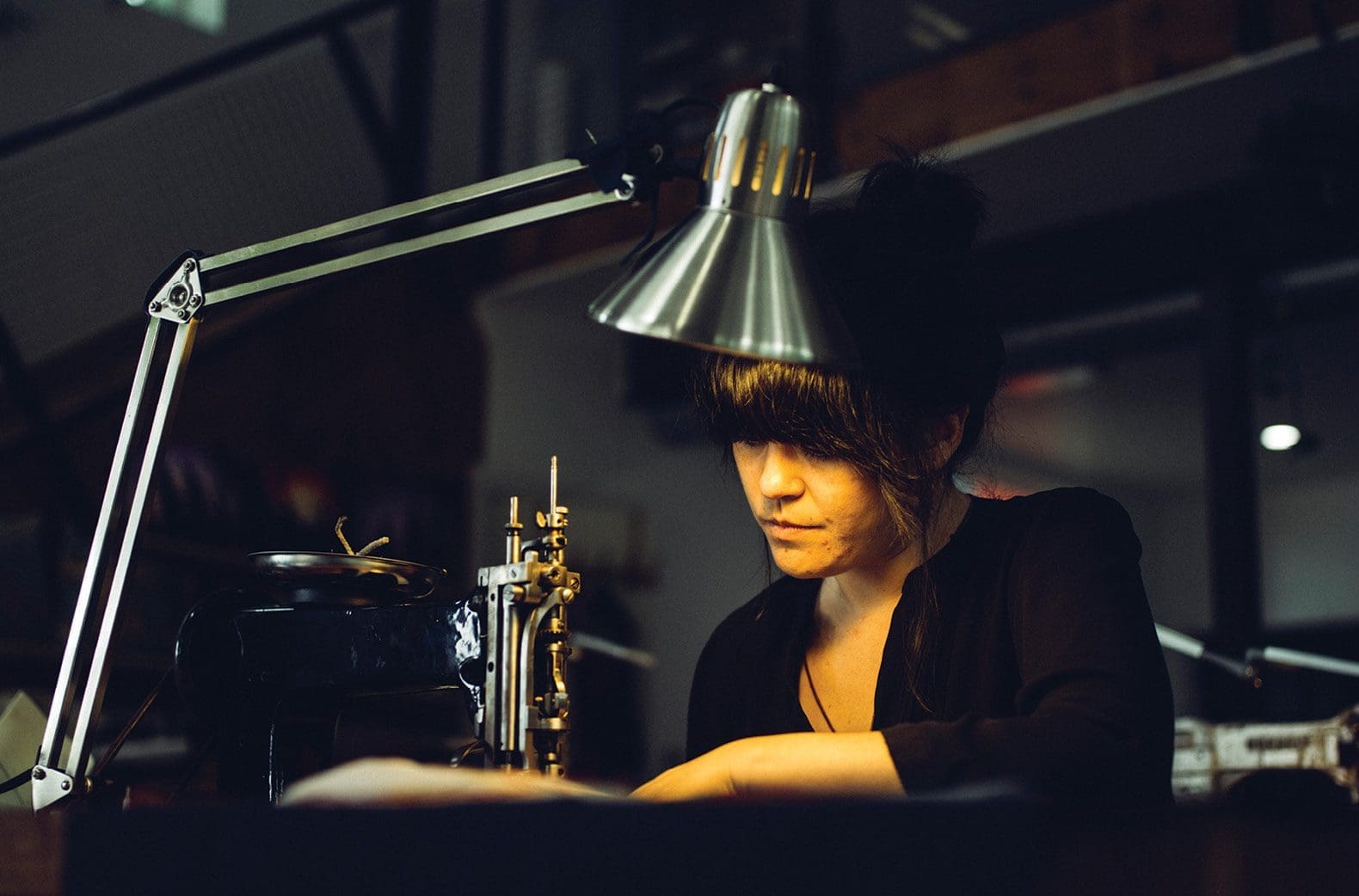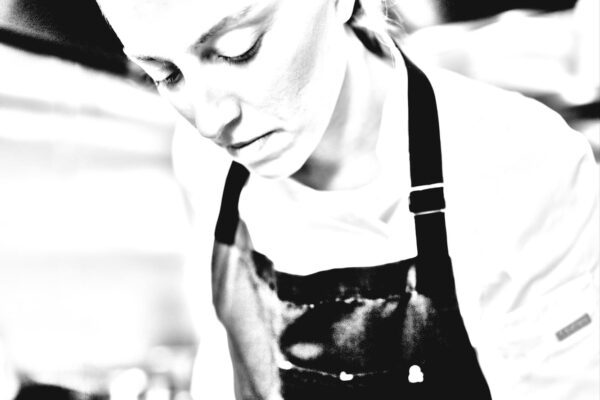Through the Looking Glass

Strange miracles, dark art, and happy accidents beckon from wonderland.
Words by Jessican Hagemann & Sommer Brugal Photos by Eric Morales
The five makers featured here all have one thing in common: they’ve taken a traditional art form and somehow subverted it in the quest to stay relevant, cutting edge, and one-of-a-kind in their quest to follow the White Rabbit. If you think all custom embroidery, earrings, light fixtures, flower arrangements, and plates are created equal, you’re in for a dizzying slip down Alice’s rabbit hole. A technicolor dream world awaits the adventurous aficionado of fine art.
 Beauty to Light
Beauty to Light
Warbach Lighting and Design
Victor Hugo said that “To love beauty is to see light,” and innovative lighting designers Nathan Warner and Buck Hubach couldn’t agree more. The friends and business partners met five years ago when they both worked at an Austin woodworking shop. Nathan had just moved from Round Top, Texas—home of the Round Top Antiques Fair—where he’d learned to create, wire, and sell unique lighting fixtures from reclaimed materials. At the time, Buck was in charge of the woodshop’s mill and looking for an opportunity to continue to flex his creative muscles. {Read More}
 Slow Fashion
Slow Fashion
Ft. Lonesome
It’s jean jackets and the perfect West Texas sunset. It’s slow fashion creating beautiful chainstitch designs. It’s Patsy, Pearl, Dolly, and Fancy; each name depicts a different personality and character. Yet, Patsy isn’t a person or individual. She’s a sewing machine that dates back more than one hundred years and hums loudly while at work in the Ft. Lonesome studio. “All of us will tell you that when you get used to your machine, [stitching] on someone else’s is very disorienting.” Amrit Khalsa is a lead designer and stitcher at Ft. Lonesome, a custom design and chainstitch shop in East Austin. She stitches on Pearl, a slow but detail-oriented machine. {Read More}
 Bee Art
Bee Art
Bee Amour
It all started when jewelry artist Anna Gieselman read an article about colony collapse disorder: the phenomenon currently decimating western Honey Bee populations. Disheartened but inspired, she took a beekeeping workshop at Round Rock Honey, where she learned how to start and maintain an apiary (or beehive). After then taking a Lost Wax Casting class at South Austin’s Creative Side Jewelry Academy, she combined her two new loves and started casting metal jewelry from actual honeycomb cells. The end result was a line of perfectly-imperfect hexagonal clusters, made chiefly of bronze or sterling silver, that Anna could transform into earrings, necklaces, cuffs, pendants, and more. She named the company Bee Amour and describes its mission as part environmental activism, part eye-catching design. {Read More}
 Assembly Required
Assembly Required
Transplants Floral
Austin native Antonio Bond finds beauty in combining found objects and Earth’s natural décor. It’s not too often you’ll find a floral arrangement laced with bones, wasp hives, or animal skulls. When you do, you might question its beauty; you might even think it strange. But for Antonio, founder of and florist at Transplants Floral, combining weird, uncommon objects with something delicate (like flowers) seems obvious. Doing so, he says, allows him to tell a story. “I’ve always liked dark things,” says Antonio. “There’s something to the dark floral I like. It’s more emotional, and a little more moody.” Antonio’s edginess was apparent from the start, when he began creating floral arrangements for friends’ weddings. {Read More}
 Sweet as Candy
Sweet as Candy
Eliana Bernard Ceramics
Candy-striping isn’t only for Christmas candy-canes anymore. Mango, blue raspberry, and bubblegum-pink swirls decorate ceramicist Eliana Bernard’s latest collection of slip-cast vases, plates, and serving trays. They’re sweet enough to stand alone or accent any designer’s dream space, and she makes pieces that fit every budget, too. Setting Eliana’s work apart from other potters’ pieces is her unusual method. Instead of throwing clay on the wheel, she works from pre-formed plaster molds, which she says create “a more uniform product.” Each vase or plate is then slip-cast in liquid clay and marbled in different-colored porcelains. The final touch is a hand-painted gold trim, brushed on between the second and third firings. {Read More}









